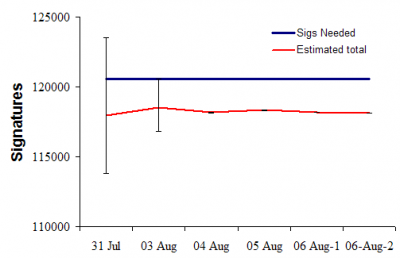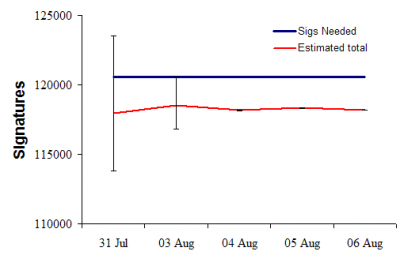I was able to attend the media presser this morning following Jay Inslee’s meeting with Office of National Drug Control Policy head (and former Seattle police chief) Gil Kerlikowske. The meeting was about legislation being pushed by Inslee to promote the safe disposal of prescription drugs, an initiative that I support. During the Q&A, I was able to ask our “Drug Czar” about the situation in Mexico:
Lee: President Obama is going to Mexico this weekend to meet with Mexican officials – and they’re dealing with an enormous organized crime problem fueled in big part by American consumption for marijuana. I’m wondering why is the equation for dealing with the problem different than it was in the early 30s when dealing with alcohol? Why isn’t setting up a regulated market the right way to go?
GK: Well, because they’re criminals and they’re terrorists. And they are creating huge amounts of havoc.
Lee: What I’m saying is…
GK: Let me finish. [One part is that anyone looking] at prohibition doesn’t realize the crime suddenly ended or changed drastically before or after. The other part is, we see with these criminal narco-terrorists and the violence that they’ve done that suddenly they’re not going to change and say “you know what? I think I’ll get a job out in the field growing potatoes”. They’re going to continue to be criminals and terrorists.
Lee: But how are they going to, can I follow up to this? How are they still going to still make money if we’re not buying marijuana from them?
GK: Extortion. Kidnapping. Theft of auto parts. Etc.
I was relying on my MP3 recorder, so I missed a few words of Gil’s second answer, so the part in brackets is a paraphrase from memory, but there were a number of video cameras there, so I’ll try to update as soon as I can. The general point he’s making here is clear though. And he’s making an invalid assertion. Crime rates did change drastically as a result of alcohol prohibition. Homicide rates steadily increased throughout the 1920s to much higher levels than before, and then began decreasing again within a few years after prohibition was repealed in the early 1930s. What makes these statistics even more extraordinary is that you’d think that the Great Depression would have had the opposite effect on those numbers.
Kerlikowske is right that the criminal organizations in Mexico aren’t going to just give up. But neither did the other criminal organizations that once benefited from alcohol prohibition. During the 1920s, they used their position in charge of Chicago’s thousands of speakeasies to control city government:
Chicago was a “wide-open” town. Police and judicial corruption were so widespread that the Better Government Association petitioned the United States Congress to intervene in the internal affairs of the City, stating that its leaders were in league with gangsters and that the city was overrun with protected vice (Woody, 1974:136). The alliance between corrupt government and organized crime was made clear by Big Bill Thomspson’s return to City government. Promising that he “was as wet as the Atlantic Ocean”, Thompson was returned to the Mayor’s Office in 1927 with strong support from Chicago’s criminal element (Nelli 1970:232). In fact, a number of Capone gangsters reportedly worked in Thompson’s campaign headquarters (Wendt and Kogan, 1953:269). It is also said that Capone, himself, donated $260,000 to Thompson’s reelection fund (Hoffman, 1989:2). With the advent of Thompson, Capone returned to the Levee, setting up headquarters in the Metropole Hotel at 2300 S. Michigan and in 1928 one block north at the Lexington Hotel. Speakeasies and vice again flourished in the First Ward, but they were not under the control of Hinky Dink Kenna and Bathhouse John Coughlin (Wendt and Kogan, 1974:351). Vice remained strictly in the hands of the Capone syndicate. In fact, the Aldermen were called into Capone’s office and told that their future would depend on their usefulness to the Capone organization (Nelli, 1976:191). To this Coughlin was said to have replied, “We’re lucky to get as good a break as we did.”
After alcohol prohibition ended, these groups didn’t just disappear either. But without the ability to control a commodity as popular as alcohol, they had to resort to prostitution, racketeering, and other narcotics, trying to maintain this level of influence they had during the prohibition era. I’ve never encountered anyone who believes that ending alcohol prohibition didn’t allow for law enforcement to have more success in fighting these groups and to weaken their grip on our government.
Well, maybe I just did. Kerlikowske seems to think that ending marijuana prohibition won’t help in our effort to defeat Mexico’s drug cartels. And he appears to justify it by saying that ending alcohol prohibition didn’t help in our efforts to fight organized crime syndicates. It certainly did, even if it took a number of years for the power of those groups to diminish. Mexico’s drug gangs make billions of dollars per year from American marijuana consumption. There’s simply no way they can recoup that level of income through extortion or stealing car parts. Setting up a regulated, legal market for marijuana will be a major blow to these groups, and it’s time that the Obama Administration start to seriously consider it.


